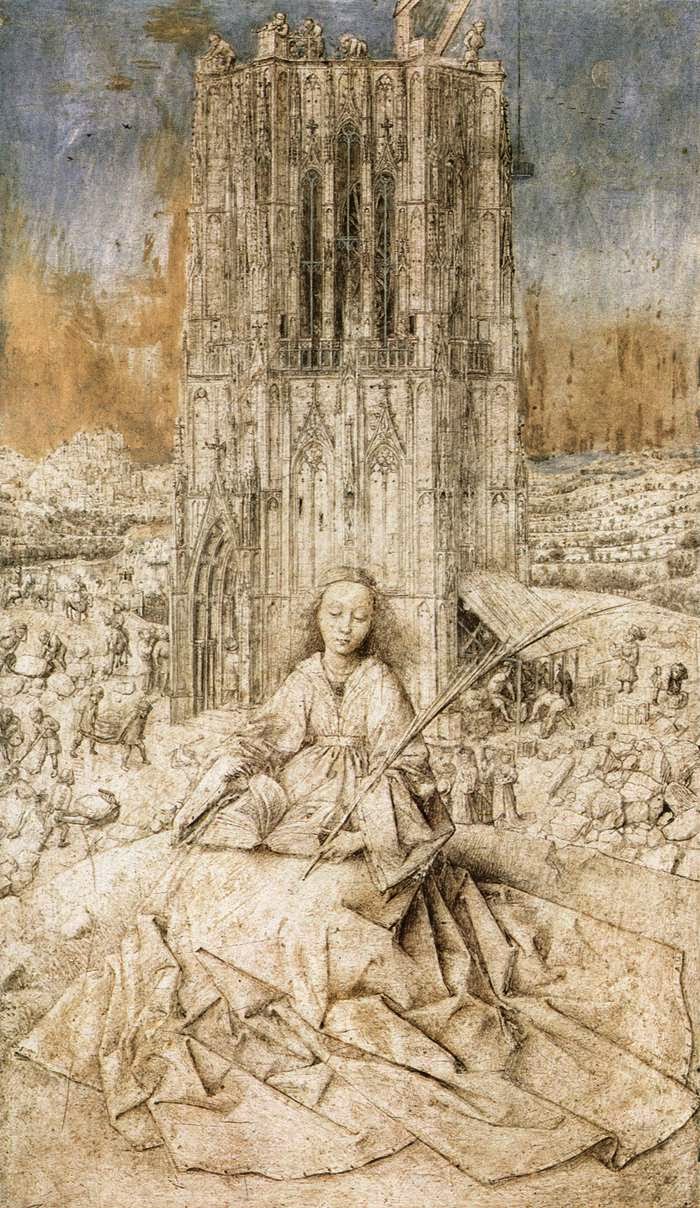Albrecht Altdorfer (German, 1480-1538)
The Battle of Issus
Signed lower left with monogram: AA and signed lower edge: ALBRECHT
ALTDORFER ZU REGENSPURG FECIT
Oil tempera on lime wood panel
158 x 120 cm
Painted in1529
Alte Pinakothek, Munich
FANTASY MOVIE
or PAINTING?
Does
this picture remind you of a fantasy movie?
It seems
hard to believe that it was painted almost 500 years ago.
ART DETECTIVES
Find the Persian King Darius in his
chariot of three white horses and Alexander the Great, in hot pursuit.
THE BATTLE
The year is 333 BCE; the place is
present day Turkey.
Listen to the ear splitting noises
of battle cries and thousands of horses charging.
Alexander’s cavalry and infantrymen
are in full body armor and plumed helmets.
The Persian king Darius’ troops wear
red uniforms and exotic turbans. They don’t
use saddles and are riding their horses bareback.
The weapons are bow and arrow,
spears and lances.
There are women in this picture. They
look like fancy German ladies going to a party wearing feathers on their hats. They are riding their horses sidesaddle. Can you find them?
Altdorfer invented this; there were
no female soldiers at Issus.
Identify the different expressions
on the faces of the knights! Some seem terrified,
anxious, confident or calm.
Whose armies are larger, Alexander
or Darius?
Alexander’s troops are lined up in perfect
formation.
Darius’ men are being pushed into
darkness. The sun is shining upon Alexander’s
soldiers.
You will now be able to tell who won.
AFTER THE BATTLE
Ride up to the tents of the bivouac at the outskirts of the city! You may find refreshments there.
Ride up to the tents of the bivouac at the outskirts of the city! You may find refreshments there.
Then move up the ramparts, past the
fortress and climb the tower of the castle.
From there you’ll get a good view of Alexander’s future empire:
The island of Cyprus lies in the
center of the Mediterranean Sea. Look beyond
for Egypt’s River Nile pouring into the sea.
Hint: The Delta of the Nile has
seven arms.
The Sinai Peninsula connects Africa
with Southwest Asia.
The Tower of Babel in the shadow on
the left is looking rather small!
Altdorfer’s earth ends with the Red
Sea. At the horizon you will even see the
curvature of the globe.
ALTDORFER’S WORLD
Does Altdorfer get the events and
the geography right?
No, he takes many “artistic
liberties”.
Accuracy is not his point. He wants to convey to us the magnitude of the
event.
With the victory at Issus
Alexander’s empire became the largest of the ancient world. It encompassed
Persia, Egypt, Greece and Babylon.
SYMBOLS
The sun symbolizes the West (Alexander) and the sickle moon stands for the Near East (Darius).
The sun symbolizes the West (Alexander) and the sickle moon stands for the Near East (Darius).
THE SKY
The dramatic sky takes up almost a
third of the picture.
The clouds burst open to make space
for a tablet that describes the scene:
Alexander
the Great defeating the last Darius, after 100,000 infantry and more than
10,000 cavalrymen had been killed amongst the ranks of the Persians. Whilst
King Darius was able to flee with no more than 1,000 horsemen, his mother,
wife, and children were taken prisoner.
This tablet is so much prettier than
your average museum label! It looks as
though you can move it around by pulling on the cord.
FUN FACTS
The battle took place 800 years
before Altdorfer painted it.
Alexander was only 23 years old when
he won at Issus.
He always rode alongside his men in
the front ranks.
He never lost a battle.
Napoleon I was a great admirer of
Alexander the Great.
Napoleon’s armies invaded Bavaria
and they took the painting to the Louvre in Paris. After Napoleon crowned
himself Emperor, he removed it from the museum and supposedly hung it in his
bathroom.
The painting was then returned to
Munich where you can see it today.
FOR FANS OF THE HOBBIT and
THE LORD OF THE RINGS
Both Tolkien (the author) and
Jackson (the movie director) MUST have seen this painting!
If you let your imagination wander,
you will see areas in the painting that will remind you of:
Mirkwood
The
Tower of Orthanc
The
Eye of Sauron
Anduin
Sea
The
City of Dale with Laketown
The
Lonely Mountain and Misty Mountain
Helm’s
Deep Fortress
White
City
Dol
Guldur
ALTDORFER
He was a Northern Renaissance
painter and one the founders of Western Landscape Art.














